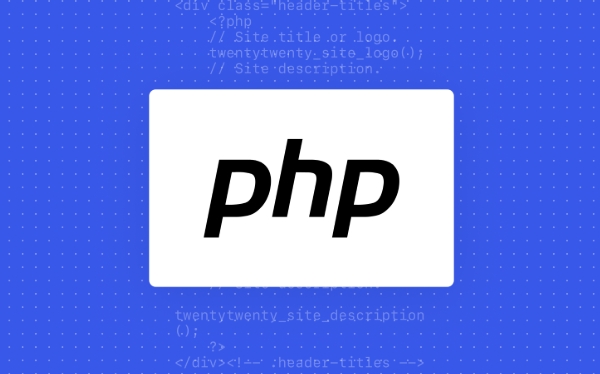PHP functions can be redefined indirectly, but with limitations and specific methods. 1. Use the runkit extension to redefine functions at runtime, but they need to be installed manually and are not recommended for production environments. 2. Allow subsequent files to redefine functions through conditional function definitions (such as function_exists). 3. Using class inheritance mechanisms to override parent class methods is a more modern and recommended way. 4. Use a function wrapper or closure to change the function behavior without directly redefining it. These methods have their own applicable scenarios. Modern development recommends using classes and objects to avoid function redefinition problems.

Yes, you can effectively "redefine" a PHP function, but there are limitations and specific ways to do it. PHP doesn't let you directly redefine a function with the same name in the same scope, but there are worksarounds depending on what you're trying to achieve.

1. Using runkit Extension (Advanced and Rarely Used)
If you really need to redefine a function at runtime, the runkit extension allows you to do that. It provides functions like runkit_function_redefine() which lets you replace an existing function.
Example:

runkit_function_redefine('greet', '', 'return "Hello again!";'); echo greet(); // Outputs: Hello again!
Important notes:
-
runkitis not enabled by default and must be installed manually. - It's generally discouraged in production environments due to potential side effects and performance issues.
- This method modify functions definitions on the fly, which can make debugging harder.
2. Using Conditional Function Definitions (Common in Plugins and Themes)
In many PHP projects (especially WordPress themes/plugins), you'll see something like this:

if (!function_exists('my_custom_function')) {
function my_custom_function() {
return "Original";
}
}This pattern allows child themes or plugins to redefine the function by defining it before the original is loaded.
How to use it:
- Define your replacement function in an earlier-loaded file.
- Make sure it has the same name and signature.
- Only works if the original function is wrapped in
function_exists().
3. Using Classes and Inheritance (Modern Approach)
If you're working in an object-oriented context, you don't "redefine" functions — you extend classes and override methods.
Example:
class ParentClass {
public function saysHello() {
return "Hello from parent";
}
}
class ChildClass extends ParentClass {
public function saysHello() {
return "Hello from child";
}
}Why this is better:
- Cleaner and more maintainedable.
- No risk of fatal errors from redclaring functions.
- Encourages modular and reusable code.
4. Using Function Wrappers or Closures (Alternative Approach)
Instead of redefining a function directly, you can create a wrapper or use a closure to change behavior.
Example:
$originalGreet = function() {
return "Hello";
};
$modifiedGreet = function() use ($originalGreet) {
return $originalGreet() . " modified!";
};
echo $modifiedGreet(); // Outputs: Hello modified!This doesn't technically redefine the function, but gives you a flexible way to customize behavior.
Redefining functions in PHP isn't straightforward like in some other languages, but depending on your use case, you can use conditional definitions, object-oriented inheritance, or advanced extensions like runkit . Most of the time, especially in modern PHP development, it's cleaner and safer to use classes and avoid function redefinition altogether.
Basically that's it.
The above is the detailed content of Can you redefine a php function in php?. For more information, please follow other related articles on the PHP Chinese website!

Hot AI Tools

Undress AI Tool
Undress images for free

Undresser.AI Undress
AI-powered app for creating realistic nude photos

AI Clothes Remover
Online AI tool for removing clothes from photos.

Clothoff.io
AI clothes remover

Video Face Swap
Swap faces in any video effortlessly with our completely free AI face swap tool!

Hot Article

Hot Tools

Notepad++7.3.1
Easy-to-use and free code editor

SublimeText3 Chinese version
Chinese version, very easy to use

Zend Studio 13.0.1
Powerful PHP integrated development environment

Dreamweaver CS6
Visual web development tools

SublimeText3 Mac version
God-level code editing software (SublimeText3)
 PHP Variable Scope Explained
Jul 17, 2025 am 04:16 AM
PHP Variable Scope Explained
Jul 17, 2025 am 04:16 AM
Common problems and solutions for PHP variable scope include: 1. The global variable cannot be accessed within the function, and it needs to be passed in using the global keyword or parameter; 2. The static variable is declared with static, and it is only initialized once and the value is maintained between multiple calls; 3. Hyperglobal variables such as $_GET and $_POST can be used directly in any scope, but you need to pay attention to safe filtering; 4. Anonymous functions need to introduce parent scope variables through the use keyword, and when modifying external variables, you need to pass a reference. Mastering these rules can help avoid errors and improve code stability.
 How to handle File Uploads securely in PHP?
Jul 08, 2025 am 02:37 AM
How to handle File Uploads securely in PHP?
Jul 08, 2025 am 02:37 AM
To safely handle PHP file uploads, you need to verify the source and type, control the file name and path, set server restrictions, and process media files twice. 1. Verify the upload source to prevent CSRF through token and detect the real MIME type through finfo_file using whitelist control; 2. Rename the file to a random string and determine the extension to store it in a non-Web directory according to the detection type; 3. PHP configuration limits the upload size and temporary directory Nginx/Apache prohibits access to the upload directory; 4. The GD library resaves the pictures to clear potential malicious data.
 Commenting Out Code in PHP
Jul 18, 2025 am 04:57 AM
Commenting Out Code in PHP
Jul 18, 2025 am 04:57 AM
There are three common methods for PHP comment code: 1. Use // or # to block one line of code, and it is recommended to use //; 2. Use /.../ to wrap code blocks with multiple lines, which cannot be nested but can be crossed; 3. Combination skills comments such as using /if(){}/ to control logic blocks, or to improve efficiency with editor shortcut keys, you should pay attention to closing symbols and avoid nesting when using them.
 How Do Generators Work in PHP?
Jul 11, 2025 am 03:12 AM
How Do Generators Work in PHP?
Jul 11, 2025 am 03:12 AM
AgeneratorinPHPisamemory-efficientwaytoiterateoverlargedatasetsbyyieldingvaluesoneatatimeinsteadofreturningthemallatonce.1.Generatorsusetheyieldkeywordtoproducevaluesondemand,reducingmemoryusage.2.Theyareusefulforhandlingbigloops,readinglargefiles,or
 Tips for Writing PHP Comments
Jul 18, 2025 am 04:51 AM
Tips for Writing PHP Comments
Jul 18, 2025 am 04:51 AM
The key to writing PHP comments is to clarify the purpose and specifications. Comments should explain "why" rather than "what was done", avoiding redundancy or too simplicity. 1. Use a unified format, such as docblock (/*/) for class and method descriptions to improve readability and tool compatibility; 2. Emphasize the reasons behind the logic, such as why JS jumps need to be output manually; 3. Add an overview description before complex code, describe the process in steps, and help understand the overall idea; 4. Use TODO and FIXME rationally to mark to-do items and problems to facilitate subsequent tracking and collaboration. Good annotations can reduce communication costs and improve code maintenance efficiency.
 Quick PHP Installation Tutorial
Jul 18, 2025 am 04:52 AM
Quick PHP Installation Tutorial
Jul 18, 2025 am 04:52 AM
ToinstallPHPquickly,useXAMPPonWindowsorHomebrewonmacOS.1.OnWindows,downloadandinstallXAMPP,selectcomponents,startApache,andplacefilesinhtdocs.2.Alternatively,manuallyinstallPHPfromphp.netandsetupaserverlikeApache.3.OnmacOS,installHomebrew,thenrun'bre
 How to access a character in a string by index in PHP
Jul 12, 2025 am 03:15 AM
How to access a character in a string by index in PHP
Jul 12, 2025 am 03:15 AM
In PHP, you can use square brackets or curly braces to obtain string specific index characters, but square brackets are recommended; the index starts from 0, and the access outside the range returns a null value and cannot be assigned a value; mb_substr is required to handle multi-byte characters. For example: $str="hello";echo$str[0]; output h; and Chinese characters such as mb_substr($str,1,1) need to obtain the correct result; in actual applications, the length of the string should be checked before looping, dynamic strings need to be verified for validity, and multilingual projects recommend using multi-byte security functions uniformly.
 Learning PHP: A Beginner's Guide
Jul 18, 2025 am 04:54 AM
Learning PHP: A Beginner's Guide
Jul 18, 2025 am 04:54 AM
TolearnPHPeffectively,startbysettingupalocalserverenvironmentusingtoolslikeXAMPPandacodeeditorlikeVSCode.1)InstallXAMPPforApache,MySQL,andPHP.2)Useacodeeditorforsyntaxsupport.3)TestyoursetupwithasimplePHPfile.Next,learnPHPbasicsincludingvariables,ech






